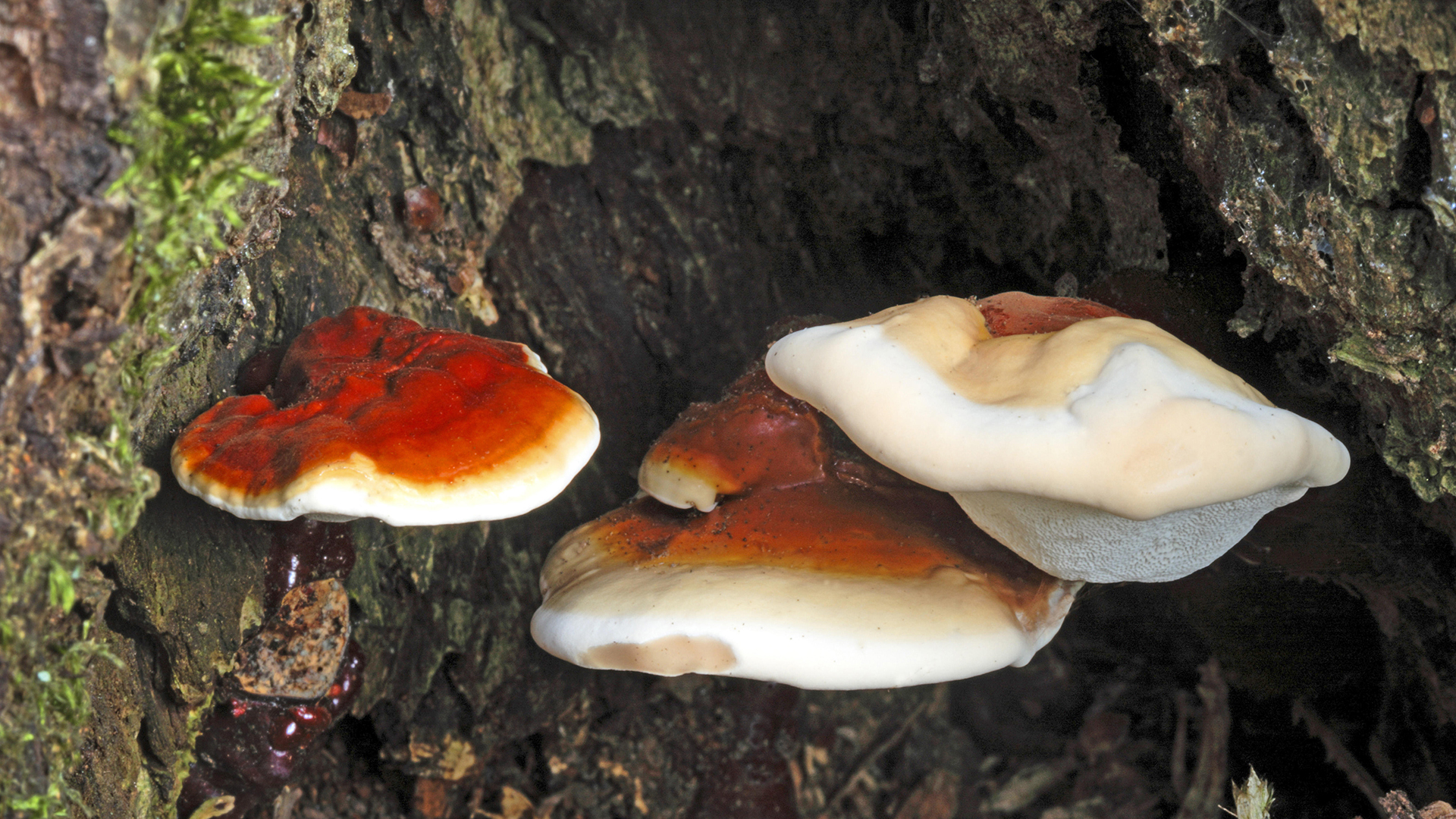Status: 01/15/2023 11:52 AM
Glossy varnish polypores can do more than just invade trees. Researchers have succeeded in producing living robot skin and a sustainable alternative to chips and batteries from fungi.
The more technologies are used today, the more the question arises of how to make them more powerful and at the same time more sustainable. After all, cleaning bots, smartphones, or computer circuit boards must also be disposed of at some point. Sustainable alternatives made from plants or fungi can help here.
For example, Austrian researchers have developed a printed circuit board based on the commonly found tree fungus Shiny Lackporling, as published in the journal Science advances published.
Circuit boards made from tree mushrooms
Printed circuit boards act as carriers for electronic components and connect them to each other by what are called conductor tracks. The board itself is made of a stable, electrically insulating material, mostly plastic or silicone. On the other hand, for mushrooms, degradable electronic circuit boards, which themselves decompose within a very short period of time, can develop within several weeks.
This is made possible by the so-called mycorrhiza. These are the root networks of fungi, which by their nature possess massive networks of subterranean fibres. Fungal skin is used for printed circuit boards. Mushroom shell is heat resistant, strong and flexible.
Purling Glossy Varnish Veneer is strong and versatile.
Image: Image Alliance/Dpa Thread Die
Simple and resource-saving production
Production begins with beech sawdust, wholemeal flour, plaster and water – and by sprouting bright polypore. The research team from Johannes Kepler University Linz allowed fungal growth on them. In the final step, the skin was then pulled from the mycelium, dried, pressed, and cut to the appropriate size. Connector tracks can then be added and electronic components attached as with conventional printed circuit boards.
According to the research team, the production of printed circuit boards is easier, requires less energy and water than traditional production, and does not use harmful chemicals. Until now, it was possible to produce simple and small printed circuit boards.
Researchers are also using mycorrhizal fungi to make batteries. In such a battery, both the bipolar membrane and the shell can be composed of lactyl polypore film.
Mushroom fungus – a complex and adaptable network
In addition to the properties of fungal skin in electronics, the fungi themselves could be of interest to science. Because mycorrhiza is a living, complex and adaptable material that forms large networks. These networks, in turn, consist of elongated cells called filaments. The hyphae absorb water and nutrients, which is how mushrooms spread in nature.
In most previously known application methods, the fungi used die off at the end of the process or are removed again. Researchers at the Swiss Federal Institute of Technology in Zurich are also using adaptive behavior to develop powerful self-healing robotic skin.
Living robot skin from a 3D printer
Like the research team in the journal nature materials describes, a 3D-printed network of hydrogels in a 3D printer. The hydrogel is loaded with spores of polypore and a glossy varnish. If the scaffold is left for several days at 23 °C and a high relative humidity of 95 percent, the fungi grow without the hydrogel drying out.
Within 20 days, mycorrhizal fungi colonize the printed mesh, resulting in a firm, rejuvenated complexion. If this is cut or punctured, it grows back together. Responsible for this is the metabolic activity of fungi and the availability of nutrients.
Mycelium soaked robot
The skin of a living robot made of fungi is soft, waterproof, renewable and strong against mechanical influences. Thus, the properties of skin through mycelium are comparable to some of the functions of biological animal skins.
The researchers conducted tests using a robotic arm and a spherical robot covered in skin made from fungi. Robots have successfully completed underwater works or been rolled on various surfaces.
More research methods and possible application areas
Both research approaches show that the use of fungicides is still in its infancy. For example, complex printed circuit boards must be made of softer fungal skin in the future, and there is also a need for more research to be able to keep metabolic activity and thus living robot skin alive in the long term.
But mushrooms other than electronics and robotics are also being researched, for example for sustainable insulation and building materials or for a highly durable alternative to leather.

“Certified tv guru. Reader. Professional writer. Avid introvert. Extreme pop culture buff.”







More Stories
Samsung Quantum Dot TV: Art meets technology
Pitch: €56m for energy startup Reverion
Plastoplan: Plastics for Energy Transition